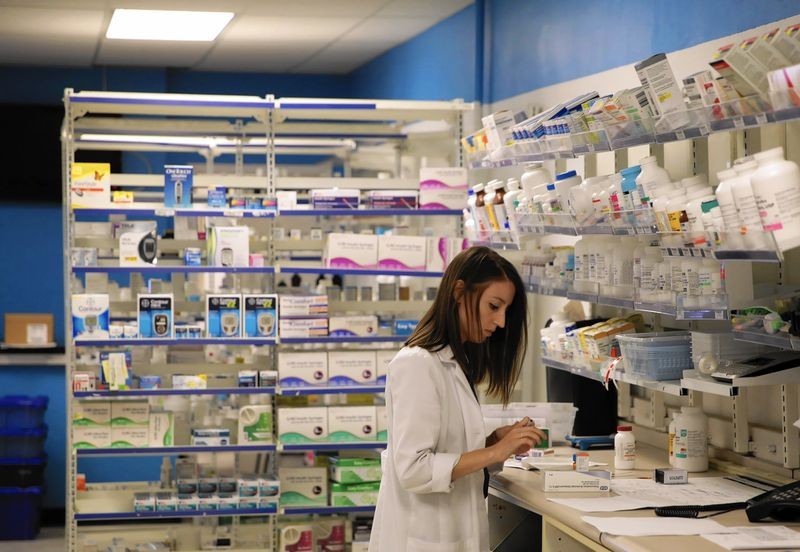
Already under a microscope for its role in proliferating America’s opioid crisis, it was unsurprising that AmerisourceBergen, one of the country’s largest drug wholesalers and distributors, made headlines again earlier this year when it settled with the California Board of Pharmacy over providing distributors and pharmacies with excessive quantities of pain medications.
News of the settlement positioned the lawsuit as another chapter in a tangled web of opioid-related litigation facing the pharma giant. Coverage of the case only scratched the surface when it comes to the complicated relationship between pharmacies and wholesalers, and why escalating litigation levied against drug supply chain peers should serve as a warning bell, prompting pharmacies to take action.
Cracks in the Foundation
The symbiotic relationship between pharmacies and drug wholesalers has soured in recent years as responsibility and accountability for the opioid crisis has been placed almost squarely on the latter.
According to the U.S. Department of Justice, the misuse and abuse of pharmaceutical drugs skyrocketed more than 130% between 2004 and 2011. In an effort to quell the escalating opioid problem (opioids are one of the three most misused medications), the DEA began imposing the Suspicious Order Monitoring (SOM) regulation initially declared more than 30 years prior as part of the Controlled Substances Act.
The Wall Street Journal cites two instances of enforcement in 2006 and 2007 via DEA-sent letters “to companies across the U.S.” reminding them of their responsibility to be good stewards of prescription drugs by, in part, reporting suspicious orders upon discovery.
Providing only a loose set of guidelines (if you’re interested in learning more about SOM’s shortcomings, I detailed its flaws in a separate post), manufacturers and distributors were forced to construct and use a system to identify and report suspicious orders. In the eyes of their supply chain peers, pharmacies were essentially off the hook.
While pharmacies have managed to dodge high dollar payouts made by distributors, the current climate shouldn’t encourage pharmacies to tuck their tails and hope they can continue to fly under the radar. Instead, it should signal pharmacies to invest in their own SOM systems, ensuring effectiveness by teaming with a third-party expert.
What Went Wrong
In a way, SOM’s enforcement helped formalize a system of checks and balances in the drug supply chain. Pharmacies placed orders with wholesale distributors based on demand, and rather than blindly filling those requests, distributors used newly-implemented systems to determine if orders were of usual size, frequency and in line with the pharmacy’s order history. As they’d done historically, pharmacists worked with prescribing physicians to make sure the medications they dispensed were medically necessary.
While the process was logical, execution was far from perfect.
In AmeriSourceBergen’s case, in addition to other measures taken to help prevent suspicious orders from being filled, the company had a SOM system in place. What it failed to properly manage was its threshold system, a method for monitoring the volume of pills being dispensed to any given pharmacy partner over a set period of time. This critical failure sent an influx of pain medication to several pharmacies across California, possibly attributing to the more than 2,400 opioid-related overdose deaths in the Golden State in 2018.
AmeriSourceBergen isn’t the only drug supplier to be reprimanded for its ineffective SOM system. Also noted by the Journal, “McKesson Corp. in 2017 paid a $150 million civil penalty over Controlled Substances Act violations, following a $13.23 million fine in 2008. Cardinal Health paid $34 million in 2008 to settle claims it violated reporting requirements.”
Future-Proofing
While pharmacies have managed to dodge high dollar payouts made by distributors, the current climate shouldn’t encourage pharmacies to tuck their tails and hope they can continue to fly under the radar. Instead, it should signal pharmacies to invest in their own SOM systems, ensuring effectiveness by teaming with a third-party expert.
OrderInsite provides complete inventory management, forecasting demand, managing equivalents, recommending transfers, monitoring diversion and suspicious orders. As the practices of the drug supply chain are increasingly called into question, pharmacies need partners they can rely on. Their success in helping patients – and keeping prescription drugs out of the hands of bad characters – depends on it.


